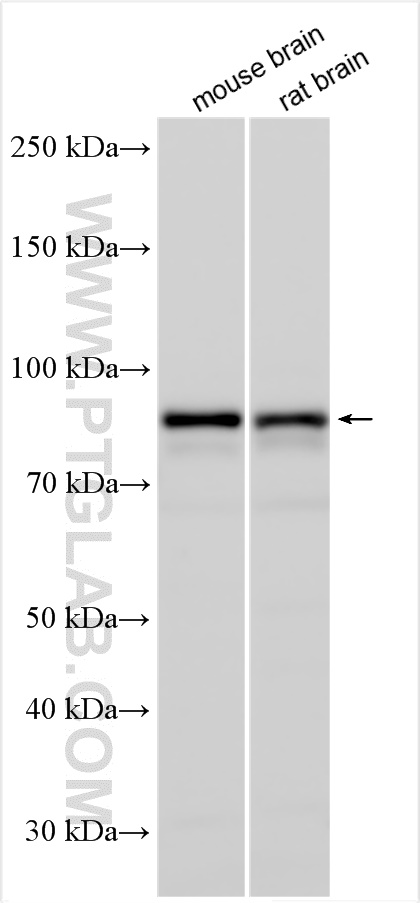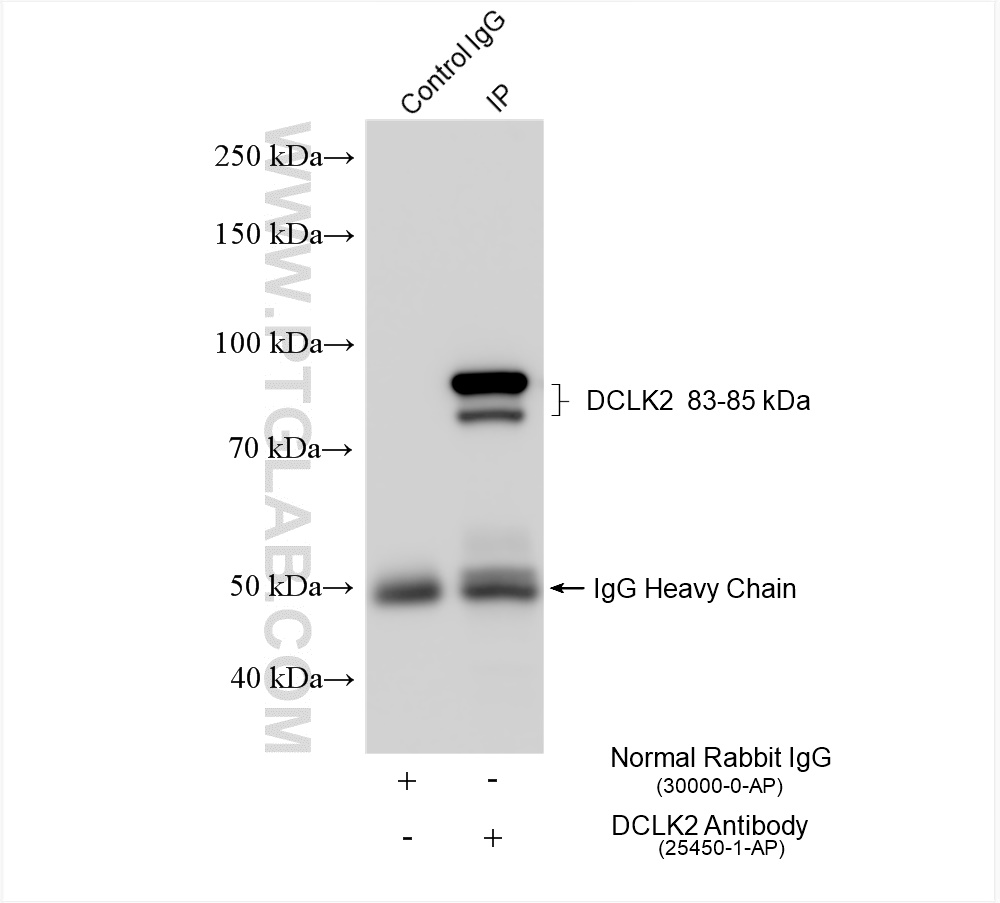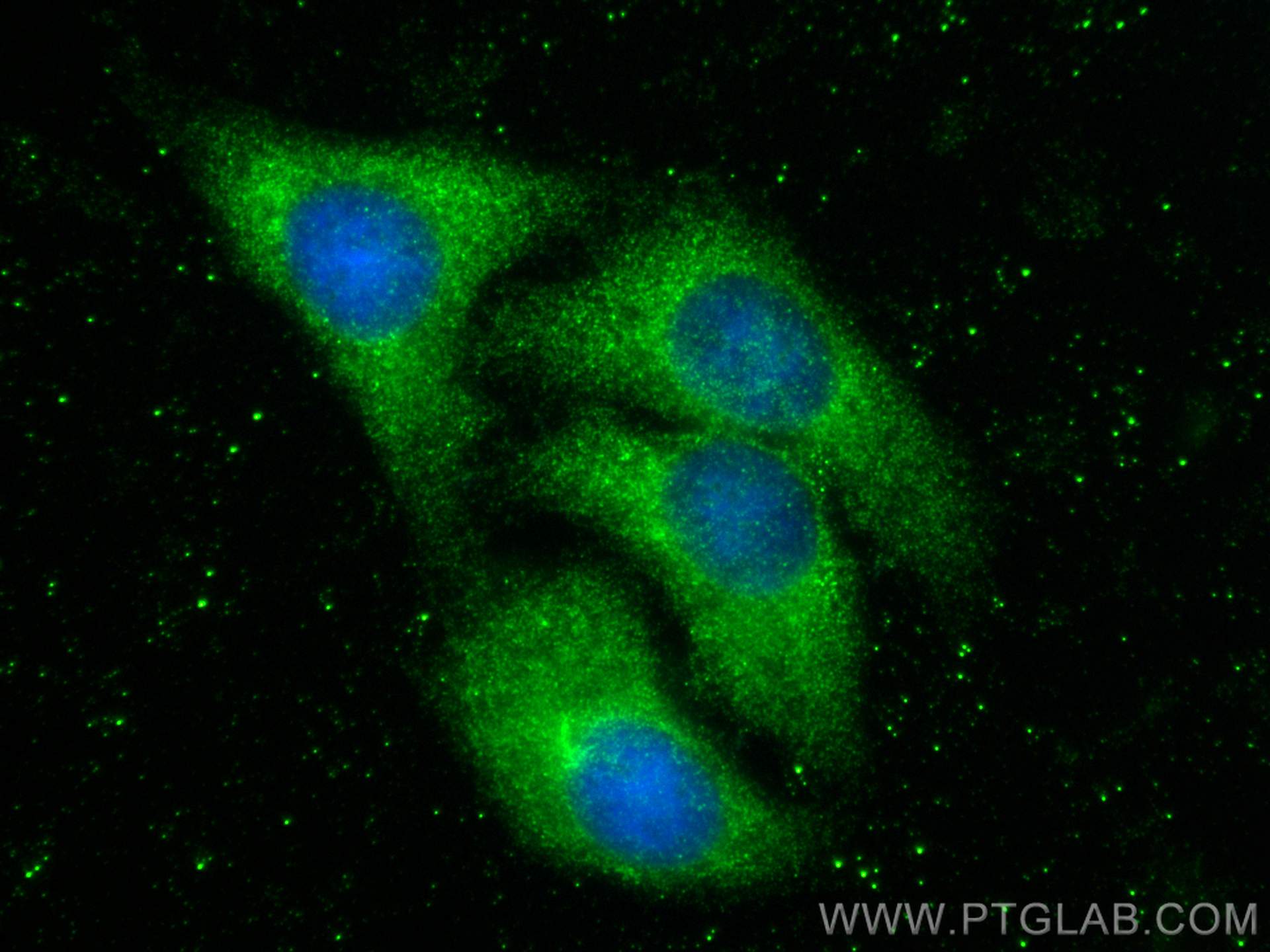验证数据展示
经过测试的应用
| Positive WB detected in | mouse brain tissue, rat brain tissue |
| Positive IP detected in | mouse brain tissue |
| Positive IF/ICC detected in | HepG2 cells |
推荐稀释比
| 应用 | 推荐稀释比 |
|---|---|
| Western Blot (WB) | WB : 1:500-1:3000 |
| Immunoprecipitation (IP) | IP : 0.5-4.0 ug for 1.0-3.0 mg of total protein lysate |
| Immunofluorescence (IF)/ICC | IF/ICC : 1:50-1:500 |
| It is recommended that this reagent should be titrated in each testing system to obtain optimal results. | |
| Sample-dependent, Check data in validation data gallery. | |
产品信息
25450-1-AP targets DCLK2 in WB, IF/ICC, IP, ELISA applications and shows reactivity with human, mouse, rat samples.
| 经测试应用 | WB, IF/ICC, IP, ELISA Application Description |
| 经测试反应性 | human, mouse, rat |
| 免疫原 | DCLK2 fusion protein Ag22142 种属同源性预测 |
| 宿主/亚型 | Rabbit / IgG |
| 抗体类别 | Polyclonal |
| 产品类型 | Antibody |
| 全称 | doublecortin-like kinase 2 |
| 别名 | DCAMKL2, CLICK-II, CLICK2, CLICK II, CL2 |
| 计算分子量 | 766 aa, 84 kDa |
| 观测分子量 | 83 kDa |
| GenBank蛋白编号 | BC032726 |
| 基因名称 | DCLK2 |
| Gene ID (NCBI) | 166614 |
| RRID | AB_3085796 |
| 偶联类型 | Unconjugated |
| 形式 | Liquid |
| 纯化方式 | Antigen affinity purification |
| UNIPROT ID | Q8N568 |
| 储存缓冲液 | PBS with 0.02% sodium azide and 50% glycerol , pH 7.3 |
| 储存条件 | Store at -20°C. Stable for one year after shipment. Aliquoting is unnecessary for -20oC storage. |
背景介绍
DCLK2 belongs to the protein kinase superfamily, contains two N-terminal doublecortin domains, a C-terminal serine/threonine protein kinase domain, and a serine/proline-rich domain in between the doublecortin and the protein kinase domains. DCLK2 is expressed in the brain, heart and eyes (PMID: 18075264).
实验方案
| Product Specific Protocols | |
|---|---|
| WB protocol for DCLK2 antibody 25450-1-AP | Download protocol |
| IF protocol for DCLK2 antibody 25450-1-AP | Download protocol |
| IP protocol for DCLK2 antibody 25450-1-AP | Download protocol |
| Standard Protocols | |
|---|---|
| Click here to view our Standard Protocols |


